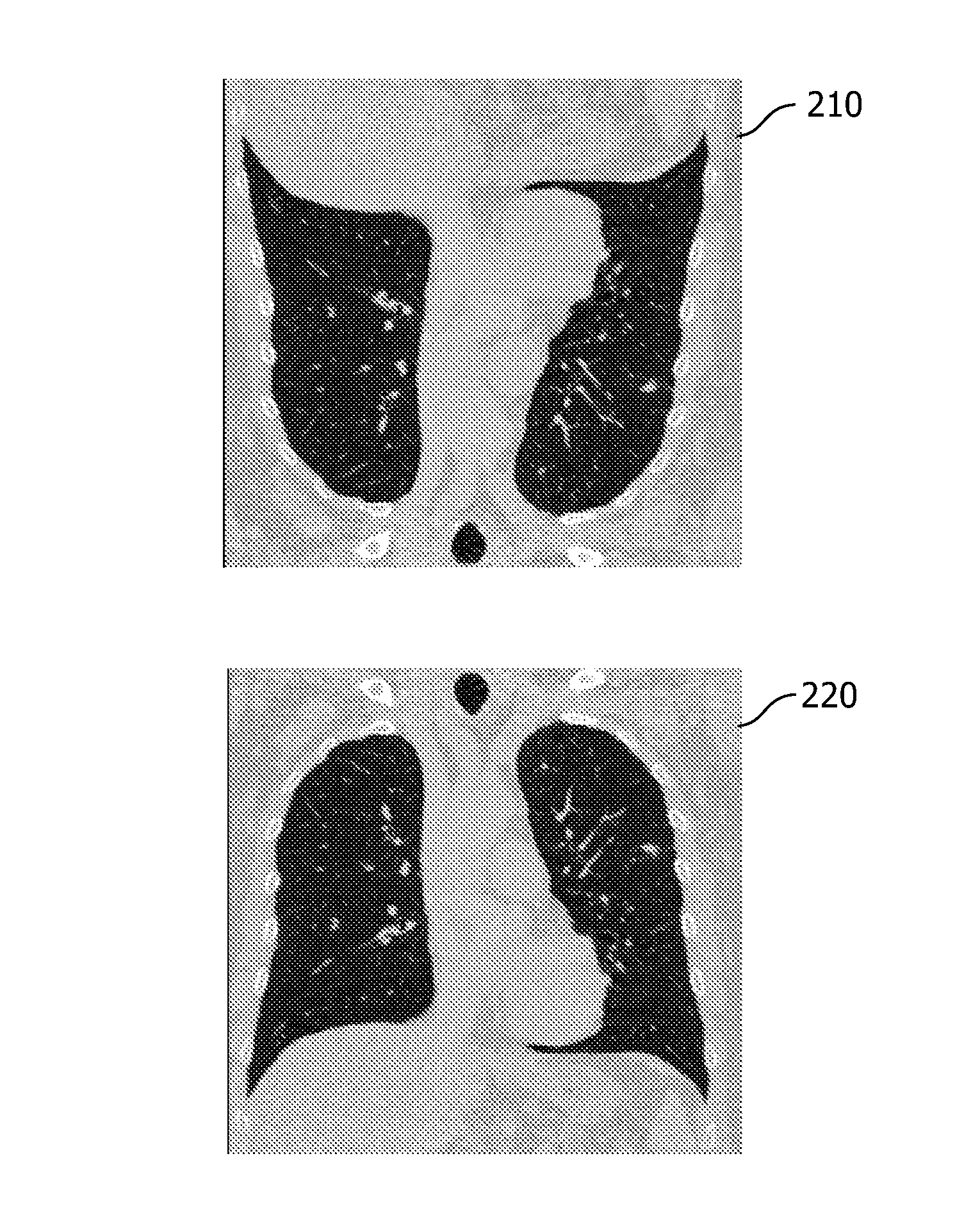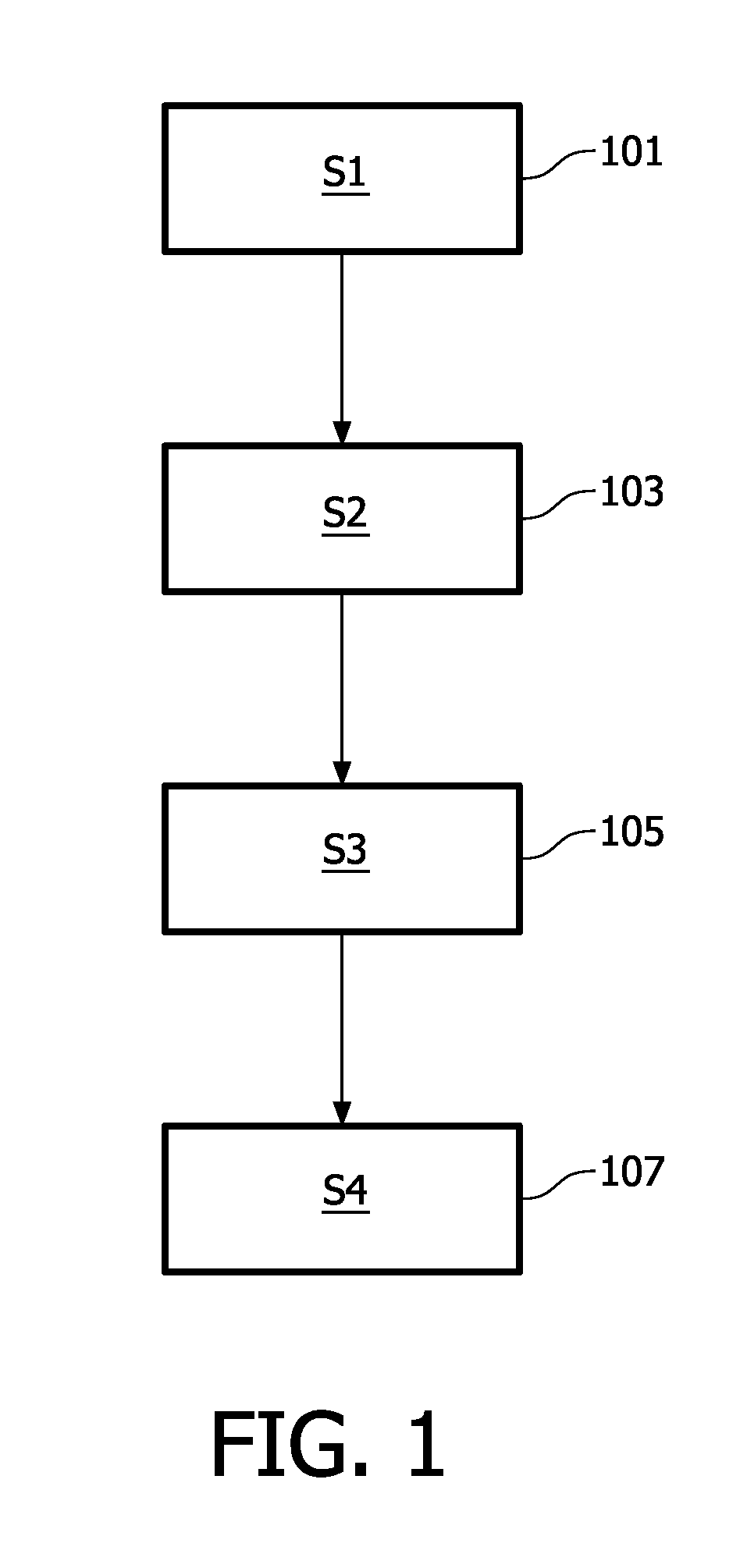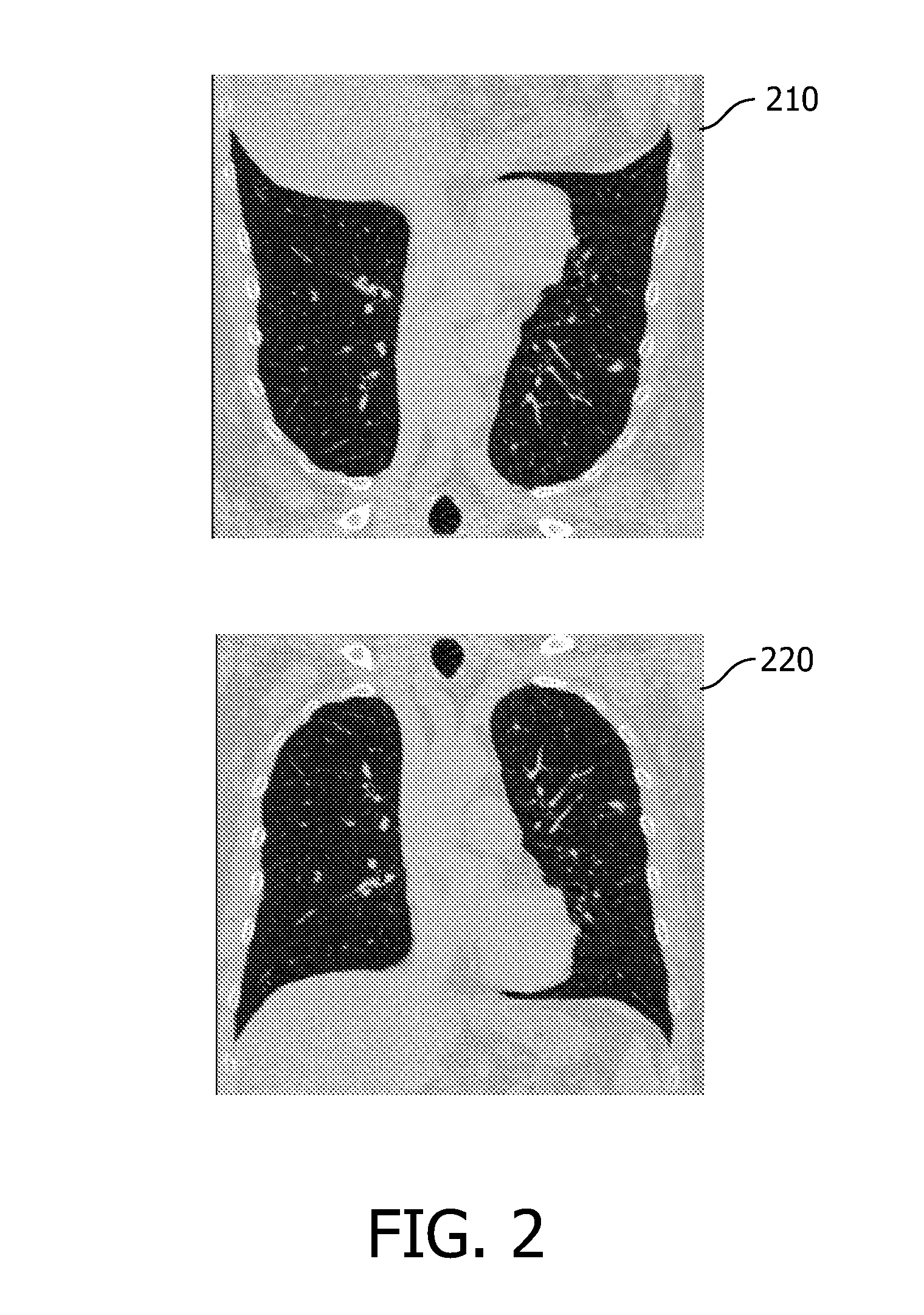Method of automatically correcting mis-orientation of medical images
an image processing apparatus and automatic correction technology, applied in the field of medical image misorientation, can solve the problems of misorientation of images coming out of hospitals' pacs, false diagnosis and oversight, information that is either not available or wrong, etc., and achieve the effect of accelerating the overall process
- Summary
- Abstract
- Description
- Claims
- Application Information
AI Technical Summary
Benefits of technology
Problems solved by technology
Method used
Image
Examples
Embodiment Construction
[0034]FIG. 1 shows a flowchart of the method of automatically correcting mis-orientation of medical images. The medical images may be stored in the Digital Imaging and Communications in Medicine (DICOM) format in a picture archiving system (PACS) of a healthcare provider.
[0035]FIG. 2 shows two exemplary images comprising sagittal views computed from CT volume data. The first image 210 is mis-oriented. The second image 220 is shown in a proper orientation used by radiologists for viewing thorax images, hereinafter also referred to as true orientation.
[0036]FIG. 3 illustrates an embodiment of the method of the invention. The top image 310 illustrates the reference anatomical area—a tracheo-bronchial tree. The skilled person will appreciate that the term “area” used in the description of the invention must not be construed to be a two-dimensional (2-D) region. This term may also refer to a three-dimensional (3-D) region. Similarly, the term “image” may refer to a 2-D or to a 3-D image....
PUM
 Login to View More
Login to View More Abstract
Description
Claims
Application Information
 Login to View More
Login to View More - R&D
- Intellectual Property
- Life Sciences
- Materials
- Tech Scout
- Unparalleled Data Quality
- Higher Quality Content
- 60% Fewer Hallucinations
Browse by: Latest US Patents, China's latest patents, Technical Efficacy Thesaurus, Application Domain, Technology Topic, Popular Technical Reports.
© 2025 PatSnap. All rights reserved.Legal|Privacy policy|Modern Slavery Act Transparency Statement|Sitemap|About US| Contact US: help@patsnap.com



